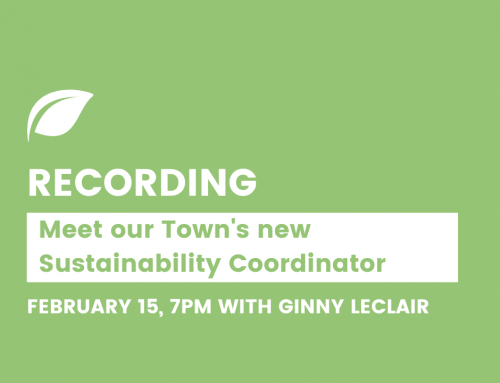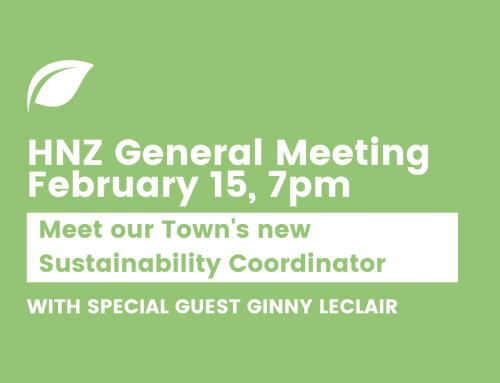by John Borger
Originally appeared in the Hingham Anchor (2/3/21) and Hingham Journal (3/9/21)
We recently commended the Selectmen’s decision to seek approval and resources at Town Meeting for development of a Climate Action Plan (CAP) for Hingham. We provided a brief, generic definition of a CAP. But what might Hingham’s plan actually look like once it is developed?
Concord, MA is a “peer” town for Hingham, comparable in overall population, percent with a college degree, median household income and median value of owner occupied housing. Both utilize the town meeting model of self-governance and were coincidentally founded on the same day, in the same year, 1635. Both are stewards of important water resources – Concord cherishes Walden Pond and its 16 mile long tributary of the Merrimack, the Concord River; Hingham enjoys a beautiful natural harbor and precious tidal areas. Both own their own municipal lighting plants; both share a rich heritage as iconic, pre-Revolutionary New England towns.
In June 2020, Concord published Sustainable Concord, its “Climate and Resiliency Plan” (you can peruse the plan at this link: https://concordma.gov/2503/Climate-Action-and-Resilience-Plan). While Hingham’s plan will reflect its own unique identity, characteristics, challenges and resources, it will undoubtedly have similarities in areas of primary focus and approach. So let’s take a moment to explore Concord’s climate action plan.
Concord focused its plan on five primary areas of concern and specified for each a key, long-term goal in the form of a “vision statement” which expresses the desired end state:
1. BUILT AREA (municipal/other buildings, dwellings, roads, parking areas, other infrastructure)
Goal: Concord’s buildings and solid waste system minimize GHG (greenhouse gas) emissions and are resilient to a changing climate.
2. ENERGY (Concord owns its electric utility – CMLP)
Goal: Concord’s electricity is 100% carbon-free, reliable and affordable.
3. MOBILITY (the transportation sector)
Goal: Everyone has access to zero-carbon transportation options to commute and get around Concord.
4. NATURAL RESOURCES (forests, water, tree canopy, etc.)
Goal: Concord’s natural resources are enhanced and supported to provide resilience benefits to the community and to maximize biodiversity and carbon sequestration.
5. PREPAREDNESS (a “sustainability”-related category that cuts across all departments and functions)
Goal: Concord’s critical infrastructure is designed to reduce emissions and is prepared for projected climate impacts.
The plan articulates several enabling goals formulated to achieve the vision for each of the five primary areas of focus. For example, to actualize its vision for ENERGY, Concord includes the following four specific goals:
• Redesign electricity rates to support energy conservation, peak load management, electrification, and renewable energy generation.
• Provide incentives for businesses and homeowners to invest in renewable energy.
• Shift CMLP’s electricity supply to 100% carbon-free sources by 2030.
• Deploy utility-scale energy storage.
Concord’s plan then breaks out each of these goals in turn into more detailed action steps. Their energy-related goals have special relevance for our town, since Hingham also owns and runs its own electric utility.
To guide implementation of the plan, the Concord Selectmen made an unequivocal commitment to preserving the historic character of the town. They also adopted key Sustainability Principles, such as “Reduce dependence on fossil fuels, underground metals, and minerals” and “Reduce encroachment upon nature”.
Most important, the plan subsumes all its goals under one overarching objective: reduce greenhouse gas emissions 80% by 2050. (This objective reflects the position of the UN Intergovernmental Panel on Climate Change at the time Concord decided on its target; the IPCC’s goal is now 100%.) Concord’s plan is informed by abundant data, which is used to identify the primary sources of Concord’s emissions and rank order them for potential positive impact of reduction in emissions:
• Burning oil and gas to power, heat and cool buildings
• Burning gasoline and diesel to power internal combustion engine vehicles
• Emitting methane from decomposing waste in the town’s landfill
• Fossil fuel-powered treatment of the town’s wastewater
• Pumping water to homes and businesses
Concord’s plan also specifies who will deliver the results. The primary players are:
The Climate Action Advisory Board, which is tasked with providing strategic direction on how Concord can achieve its mitigation and adaptation goals. The Board is comprised of members of the community with expertise in climate, energy, sustainability, and adaptation.
The Municipal Team, which includes municipal staff experts from departments and divisions including the school department, water and sewer division, facilities management, public works, fire, police, natural resources, electric utility, communications, planning, and town management.
For each of the five main areas of focus, and their associated goals, the plan specifies “champions” – town entities or departments that own principal responsibility for each of these areas, as well as “key partners” – town, community and business entities that will collaborate with the champions to achieve each goal. Concord town administration includes a Director of Sustainability who promotes awareness in each municipal department of how it can better integrate long term sustainability into its function on an ongoing basis.
Finally, Concord tried to be realistic. It structured its plan as a flexible roadmap for its initial five year planning horizon. It made provisions for periodic updates and adjustments as it implements the plan, measures results and assesses progress. It anticipates significant additional installments in the decades ahead. E.g., it may well decide to try to accelerate progress toward carbon neutrality as federal and state programs are implemented.
Now that we better understand what a climate action plan entails, in future posts, we’ll explore why Hingham needs to develop its own plan, some of the benefits we can expect, and some of the challenges and opportunities we’ll face. Meanwhile, take a minute and visit Concord’s website to review what they have done. We’re sure you will come away all the more convinced to vote YES on the Selectmen’s climate plan warrant articles in April.





